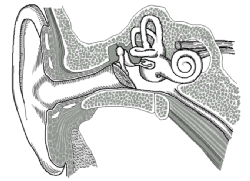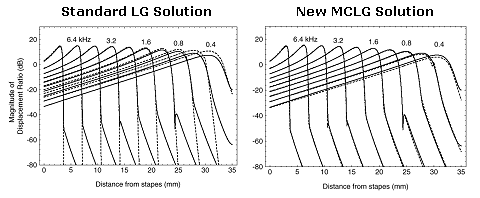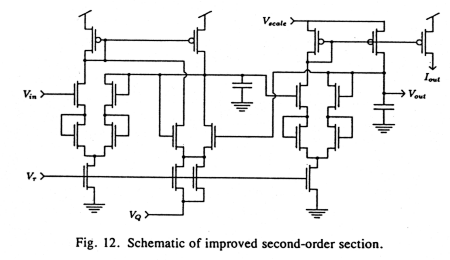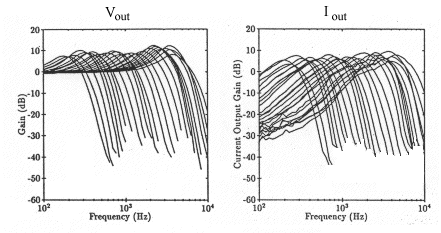Models of the Cochlea (written in 2000)

|
The cochlea is the snail-shaped organ in this figure. It is
responsible for converting sound waves into a neural/spectral representation,
and as such, it is the site of the first major computations in the
auditory pathway.
I have devoted several years to understanding the physics
and mathematics of wave propagation in the cochlea.
|
My early work in this area is covered in my
Caltech Ph.D. Thesis, which was
supervised by
Carver Mead
and
Dick Lyon
at Caltech.
The major contribution of the thesis
is the extension of the standard Liouville-Green (LG) solution to the
cochlear mechanics problem.
In essence, the Liouville-Green solution correctly predicts a wave
whose wavelength changes due to the changing properties of the
basilar membrane. However, the standard Liouville-Green solution
does not agree with numerical simulations after the best place,
or at low frequencies. In the thesis,
I develop the Mode-Coupling Liouville-Green (MCLG) solution, which makes
the following two corrections:
- It provides a more accurate stapes correction term which improves
the accuracy at low frequencies.
- It couples energy into a second wave mode, as necessary to solve
Laplace's equation, and thus agrees with the numerical solutions
after the best place.
A comparison of the standard LG solution and the MCLG solution is
shown below.

With the kind insistence of Dr. Egbert de Boer, a journal paper based
on this work appeared in the
November 2000 issue of JASA -- only about 9 years after
the work was done! Here's the reference (and the paper in PDF format):
In the thesis, I also developed a 1D and 2D analog chip solution that
is based on a direct mapping of the cochlear mechanics problem onto
an analog computation structure.
In addition to the above analytical and analog chip work, I also made
some contributions to improving the classic Mead-Lyon analog VLSI
silicon cochlea. These included modifications for stability, compactness,
matching, etc. The final second-order-section and chip measurements for
a 51-stage cascade are shown below.


These improvements were described in
-
L. Watts, D. Kerns, R. Lyon, C. Mead,
``Improved Implementation of the Silicon Cochlea'',
IEEE Journal of Solid-state Circuits, vol. 27, no. 5,
pp. 692-700, May, 1992.
Following our work on the silicon cochlea, the mantle was picked up
by Andre van Schaik, who improved the performance even further.
Awesome.
For an excellent tutorial description of Lyon's Cochlear Model,
see
Malcolm Slaney's website. About halfway down the page, there
are links to various versions of his Mathematica notebook entitled
"Lyon's Cochlear Model".
Colleagues at the University of Wisconsin have put together a nice
set of links to tutorial pages relating to hearing.
|



